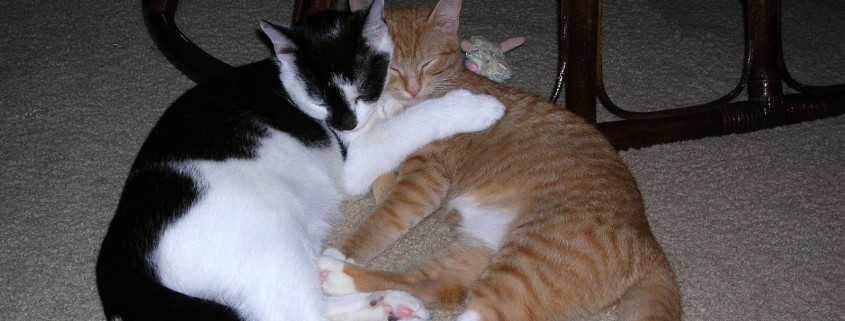Cat Behavior
Cats have been living with people for about 5000 years, which is a relatively short period of time when talking about evolution. In contrast, dogs have been domesticated for 30,000 years and there is evidence suggesting the relationship goes back even further. This short period of domestication has adapted cats to share our homes, but cats are still wild at heart and most are certainly capable of fending for themselves in the wild. Cats are true carnivores meaning that they require animal meat for survival. Their predatory instincts make them easily motivated by play and food. While most cats do not aim to annoy you, they do not demonstrate the same desire to please their masters as dogs. That being said, every cat is different. Some cats are very independent and aloof while others are snuggle-bugs, preferring to be glued to your lap. When choosing a new feline companion make sure to consider the affection and activity level that best suits your lifestyle. Most rescues and shelters will have a large selection of cats for adoption can help you find just the right cat for you.
Some pet parents live in areas where their cat can go outside. Outdoor cats get a lot of exercise and mental stimulation because they have the freedom to explore and hunt. Going outdoors also exposes cats to a variety of health risks including parasites, disease and danger from other animals or traffic. Pet parents who keep their cats indoors often find that their cats are more affectionate because they look to their humans for entertainment. If you keep you cats indoors only, make sure to provide them with plenty of toys and find time to play with them so they get their exercise and enrichment.
By nature, cats are very clean. They groom themselves and do not need as many baths as a dog. They also like to cover their feces so litterbox training usually goes very smoothly. If a cat is not using its litterbox you should consult your vet to make sure there is not an underlying health problem. While stubborn, cats do respond well to positive reinforcement so any other household rules about what furniture is off limits and where they are allowed to sharpen their claws can be taught with patience and rewards. Inappropriate behavior such as clawing the carpet or getting into the cupboards should be addressed immediately and quickly so the cat understands what they did wrong. Yelling at a cat after they have done something naughty does not teach them what they did wrong and will not prevent further bad behavior. Cats are creatures of habit and like to have a routine. Any changes to their living environment can be very stressful for them.
Studies
Influence of cat odor on reproductive behavior and physiology in the house mouse.
Gaze shits and fixations dominate gaze behavior of walking cats.
Training veterinary students in animal behavior to preserve the human-animal bond.
The benefit of pets and animal-assisted therapy to the health of older individuals.
Head rubbing and licking reinforce social bonds in a group of captive African lions, panthera leo.


